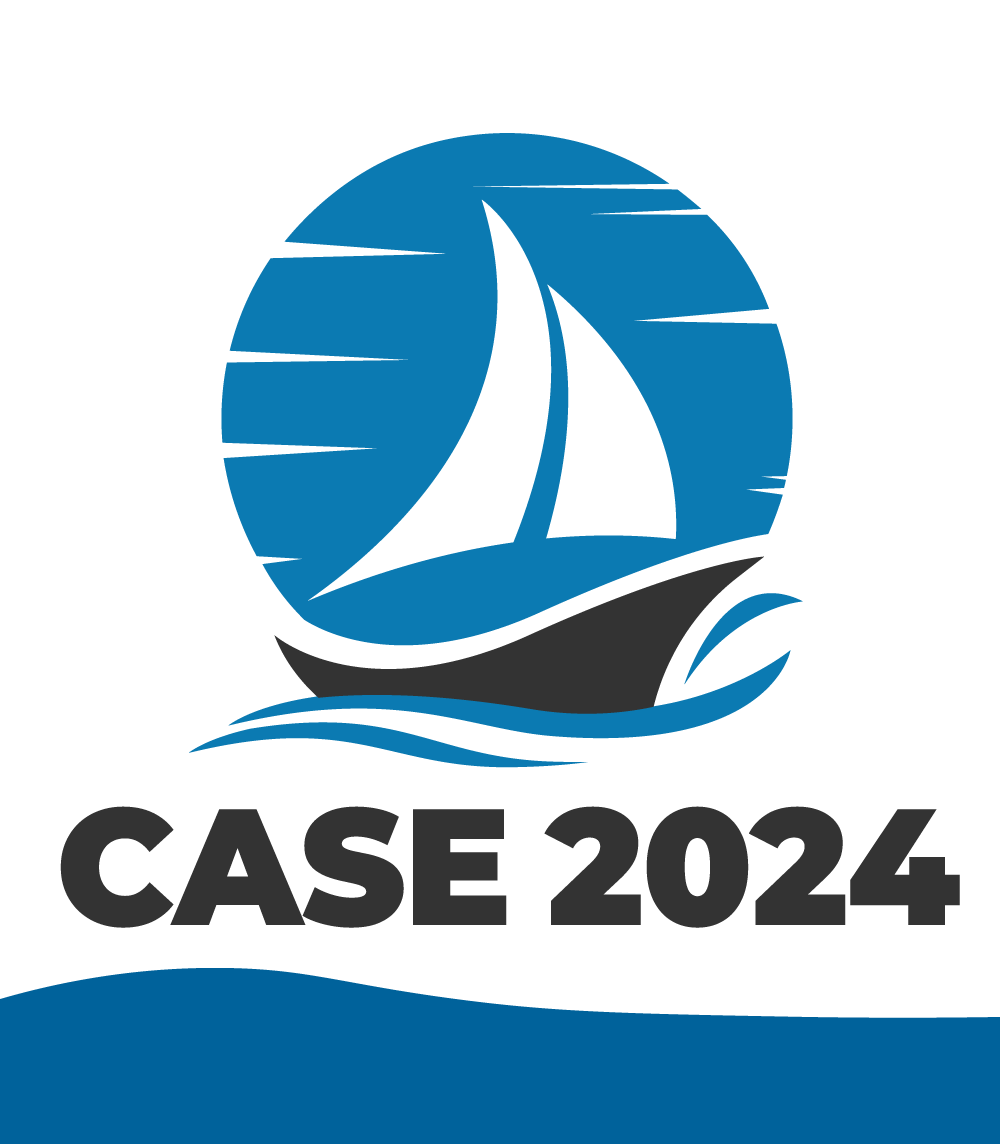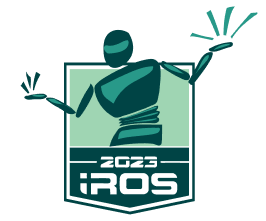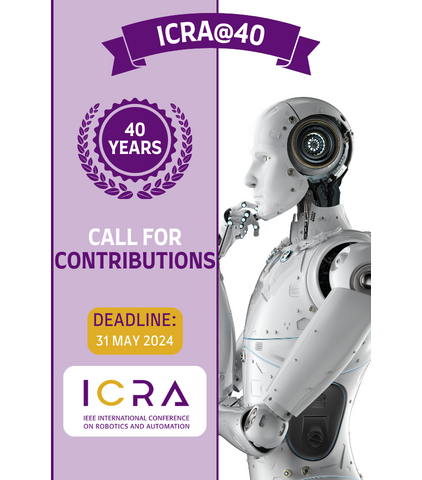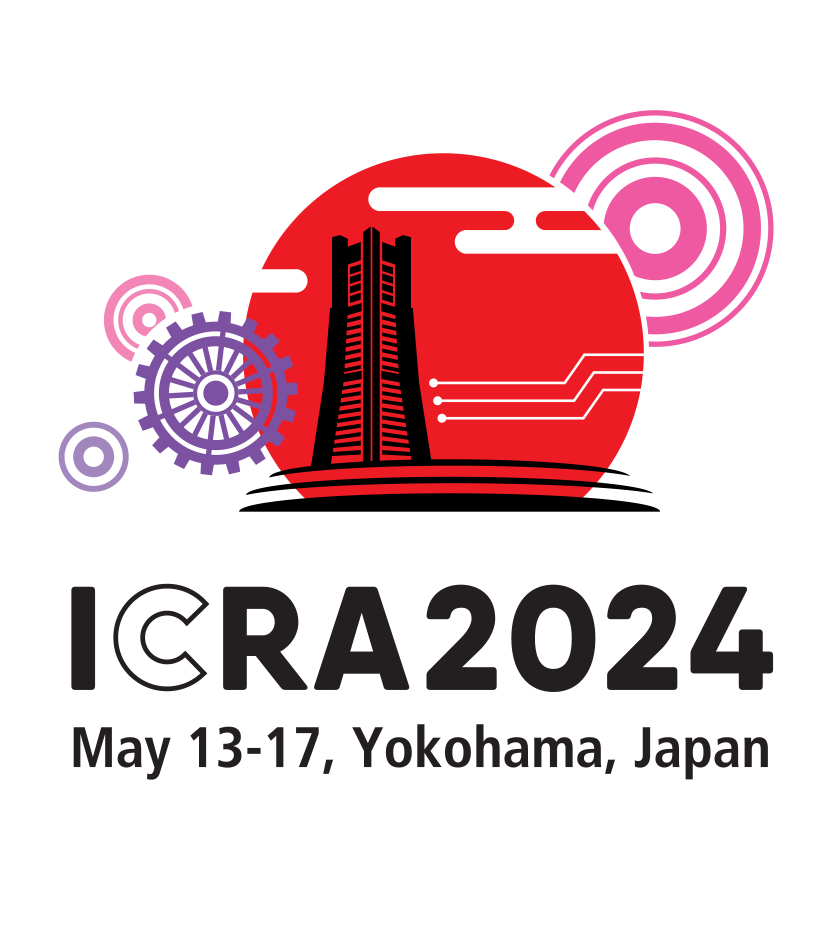Information for Authors
General information
The IEEE Transactions on Medical Robotics and Bionics (T-MRB) is a Green Open Access (OA) journal (https://open.ieee.org/). Green OA does not cost anything as long as the authors put their preprint into an IEEE approved repository. Otherwise, authors could opt for Gold OA at the cost of $2495. The OA fee was increased from $2345 to $2495 US for any articles submitted on or after 1 January 2024.
All manuscripts must be submitted to the ScholarOne Manuscripts (https://mc.manuscriptcentral.com/tmrb-ieee), following the appropriate IEEE format. Article templates can be found here: https://ieeeauthorcenter.ieee.org/create-your-ieee-article/use-authoring-tools-and-ieee-article-templates/ieee-article-templates/templates-for-transactions/.
Please, note that the authors should submit the complete paper including text, figures and tables in a single PDF or Word file. Figures and tables must be clearly numbered and captioned.
Papers longer than their typical length (page limit) are charged with over-length fees. Authors are charged $175/page for the pages exceeding the page limit.
The articles in this journal are peer reviewed in accordance with the requirements set forth in the IEEE PSPB Operations Manual (sections 8.2.1.C & 8.2.2.A). Each published article is reviewed by a minimum of two independent reviewers using a single-anonymous peer review process, where the identities of the reviewers are not known to the authors, but the reviewers know the identities of the authors. Articles are screened for plagiarism before acceptance.
Types of Submissions
The IEEE T-MRB publishes Original Articles, Short Articles, Review articles and Position Articles.
Original Articles
Original Articles are full-length articles about in-depth studies reporting major findings in the medical robotics and bionics communities. T-MRB emphasizes the importance of good scientific writing and clarity in the presentation of the key concepts. Original articles are typically 12 pages (page limit).
Short Articles
Short Articles usually describe a single result, experiment, or technique of high interest for the community, for which a short treatment is appropriate. Short articles are typically 4 pages (page limit).
Review Articles
A review article consists of a detailed and comprehensive narrative analysis of a specific research field, of interest for the T-MRB mission. It is a summary of recent developments, and a guide to the relevant literature. Review articles are typically 12 pages (page limit).
Position Articles
Position articles are invited contributions aiming at providing a critical and personal author’s opinion of the evolution of a specific topic, dealing with the T-MRB scope. Position articles are typically 8 pages (page limit). Position articles are typically authored by authoritative players in the field and aim at setting guidelines and giving a perspective of the research domain.
Prepare and Submit Manuscripts
Paper Format
All manuscripts should be submitted in the typical double column format of the IEEE style file. Article templates are available at the IEEE Author Center.
The first page must include the paper title and authors’ name, affiliation, and full address (mailing address, e-mail address, telephone and fax number), with the corresponding author clearly indicated, the abstract (no more than 200 words), the keywords (index terms), and the beginning of the main text of the paper. Do not use a cover page.
If a revised version of a manuscript will be resubmitted, the same format must be used (the authors may submit two files: one in which the changes made are highlighted in yellow, and a “clean” version without highlights).
Title should be concise (no more than 50 words) and informative. It should attract the attention of a broad spectrum of potential readers.
Abstract must be 200 words or less. It should highlight the problem being addressed, the targeted innovation, the major findings and the work significance.
Only after the acceptance for publication of their manuscript, Authors are required to include a representative Graphical Abstract accompanying the manuscript. A Graphical Abstract is a concise, illustrative reflection of the content of your article to capture reader’s attention; it can be an image, a video, an audio file, or a PowerPoint file. The Graphical Abstract should highlight the main point of your article and include a caption describing the image.
The Graphical Abstract shall be a representative graphics that summarises the content of the related paper and that the author simply chooses, regardless of the fact that it appears or not in his/her paper.
Authors may prepare their Graphical Abstracts by following IEEE guidelines: https://journals.ieeeauthorcenter.ieee.org/create-your-ieee-journal-article/prepare-supplementary-materials/#graphicalabstract
Please, note that Graphical Abstracts submitted to T-MRB do not undergo a peer review process.
Figures, Tables, and References
In all submissions, all figures and tables must be numbered and cited in the text. References must be in a separate reference section at the end of the paper, with items referred to by numerals in square brackets. References must be completed in IEEE style as follows:
- Author(s), first initials followed by last name, title in quotation marks, periodical, volume, inclusive page numbers, month and year.
- Books: Author(s), first initials followed by last name, title, location, publisher, year, chapter, page numbers.
Example for journal papers:
- W. P. Risk, G. S. Kino, and H. J. Shaw, “Fiber-optic frequency shifter using a surface acoustic wave incident at an oblique angle,” Opt. Lett., vol. 11, no. 2, pp. 115–117, Feb. 1986.
Example for books:
- G. O. Young, “Synthetic structure of industrial plastics,” in Plastics, 2nd ed., vol. 3, J. Peters, Ed. New York, NY, USA: McGraw-Hill, 1964, pp. 15–64.
Disclosure of financial support as well as author and project-related conflicts of interest
A full disclosure of financial support for the work described in the article, as well as any financial and personal relationships of the author(s) that could represent a conflict of interest must be reported in the Acknowledgments section of the article.
Keywords Selection
A list of significant keywords (or index terms) must be associated with each submitted paper. Select a minimum of 2 up to a maximum of 5 (recommended) keywords during one of the submission steps at the T-MRB ScholarOne Manuscripts Central (https://mc.manuscriptcentral.com/tmrb-ieee).
Multimedia Materials
T-MRB allows multimedia attachments (typically videos or datasets) to accompany a paper. Multimedia can be "playable" files (.mpeg, .avi, .wav, .mov, .midi, etc.) or "dataset" files (e.g., raw data with programs to manipulate them). Such material is intended to enhance the manuscript, increasing its clarity and its informative content.
General guidelines for the submission of multimedia material are available at: https://journals.ieeeauthorcenter.ieee.org/create-your-ieee-journal-article/prepare-supplementary-materials/#preparingmultimedia
Videos should be prepared without using special codecs (coders/decoders) plug-ins and allowing portability under various platforms. Accordingly, the most common media formats (.wmv, .avi, etc.) are strongly recommended.
Only freely available media players (e.g., QuickTime, RealPlayer, Microsoft Windows Media Player) should be required by users.
A description of multimedia objects should be reported in the Supporting material file. The file name should correspond to the name provided in the Supporting material file (e.g. Supplementary Movie S1).
Ethical Issues
T-MRB accepts only original, previously unpublished manuscripts that are not currently submitted to any other journal. Authors (not IEEE) are responsible to determine whether disclosure of their material requires the prior consent of other parties and, if so, to obtain it. If authors make use of charts, photographs, or other graphical or textual material from previously published material, the authors are responsible for obtaining written permission to use such material in the manuscript.
The use of someone else's prior ideas, processes, results, or words without explicitly acknowledging the original author and source are considered as plagiarism by IEEE. Plagiarism in any form is unacceptable and is considered a serious breach of professional conduct, with potentially severe ethical and legal consequences. Self-plagiarism is also unethical. If authors have used their own previously published work(s) as a basis for a new submission, they are required to cite the previous work(s) and briefly indicate how the new submission offers substantively novel contributions beyond those of the previously published work(s).
In addition, multiple submissions to different journals are not acceptable and are subject to disciplinary actions. This applies to the entire period in which a paper is under review on T-MRB.
Plagiarism
T-MRB accepts only original, previously unpublished manuscripts that are not currently submitted to any other journal. Authors (not IEEE) are responsible to determine whether disclosure of their material requires the prior consent of other parties and, if so, to obtain it. If authors make use of charts, photographs, or other graphical or textual material from previously published material, the authors are responsible for obtaining written permission to use such material in the manuscript.
The use of someone else's prior ideas, processes, results, or words without explicitly acknowledging the original author and source are considered as plagiarism by IEEE. Plagiarism in any form is unacceptable and is considered a serious breach of professional conduct, with potentially severe ethical and legal consequences. Self-plagiarism is also unethical. If authors have used their own previously published work(s) as a basis for a new submission, they are required to cite the previous work(s) and briefly indicate how the new submission offers substantively novel contributions beyond those of the previously published work(s).
In addition, multiple submissions to different journals are not acceptable and are subject to disciplinary actions. This applies to the entire period in which a paper is under review on T-MRB.
Human Subjects and Animals
Starting from 2021, IEEE journals are required to confirm that the authors have approval or exemption for research involving human subjects or animals.
The research should adhere to the ASAB/ABS Guidelines for the Use of Animals in Research (updated in each January issue of the Journal, please check here, the legal requirements of the country in which the work was carried out, and all institutional guidelines.
You should not submit a manuscript without providing this confirmation in the submission process. The IEEE Publication Services and Products Board (PSPB) Operations Manual, Section 8.1.1.E., states: "Authors of articles reporting on research involving human subjects or animals shall confirm upon submission of an article to the Editor whether or not an approval was obtained from a relevant Review Board (or equivalent local/regional review). If such an approval was obtained, the original source and reference shall be provided to the Editor at the time of submission and shall appear in the article."
During the submission process, the author will be asked: "Did this research involve either human subjects or animals?". If the author answers Yes, he/she will be then asked: "If yes, was approval obtained from a relevant review board (or local/regional equivalent)?" with possible responses (1) "Yes. All approval details must be described in detail in the box below, as well as included in the manuscript." or (2) "Not applicable. This research is exempt. The reasoning or details of exemption must be detailed in the box below as well as included in the manuscript." A text box is provided, in which the author can enter the requested details. The following information should be included in both the text box and the manuscript itself: name of the institution, name of the IRB/IACUC/ethics board that determined the approval or exemption and date of approval/exemption.
If no tests on human subjects or animals are reported in the paper, the authors should select "Not applicable: This submission does not include human or animal research" and thus there is no need of ethics approval.
Copyright
It is the policy of the IEEE to own the copyright to the technical contributions it publishes on behalf of the interests of the IEEE, its authors, and their employers; and to facilitate the appropriate reuse of this material by others. To comply with U.S. copyright law, authors of accepted papers are required to complete an IEEE electronic copyright form (ECF) on ScholarOne Manuscripts when they submit their final package for publication. This form returns to authors and their employers full rights to reuse their material for their own purposes upon request.
Suggesting Potential Reviewers
Authors have the option to suggest potential reviewers for their article. Please note that whether the suggested reviewers will be actually asked to review the submission or not, will be left entirely to the discretion of the handling associate editor. Suggested reviewers should not have any conflict of interest with any of the authors, nor have any past or current relationship with the authors that in any way hinders their ability to provide an objective and unbiased review. Also, if the authors feel that a particular person will not be able to provide an unbiased review on their manuscript and wish to exclude this person as a reviewer, they should provide a detailed explanation of the reasons, for example publications or common work that creates a conflict of interest between the authors and the potential reviewer.







